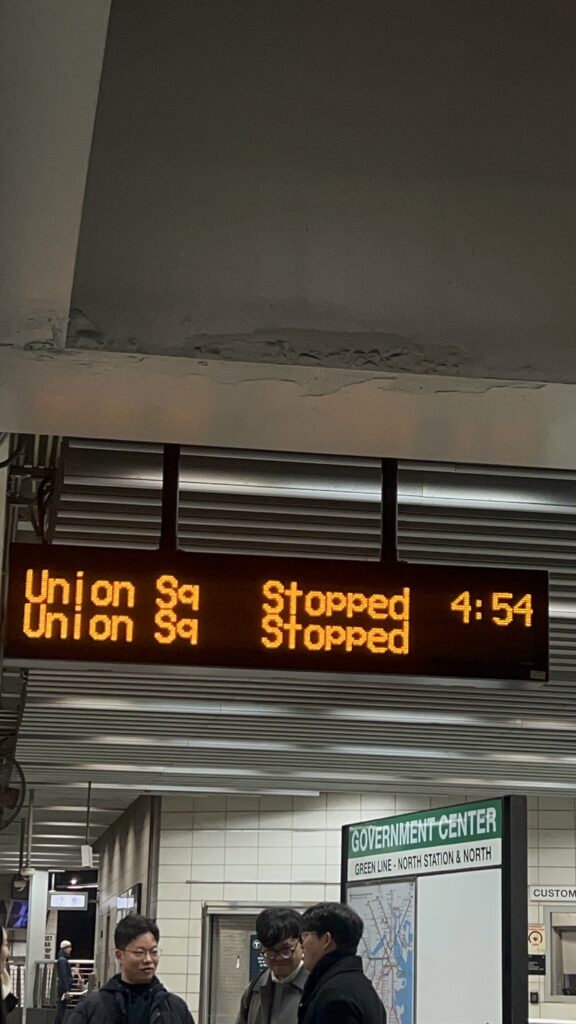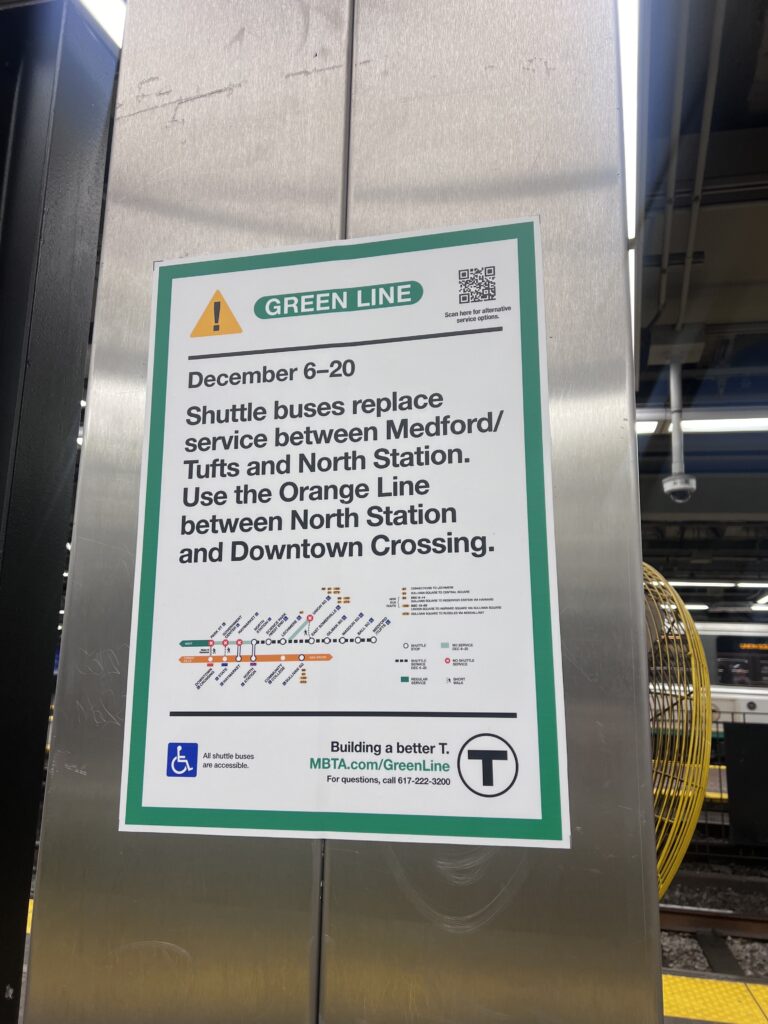Physical Address
304 North Cardinal St.
Dorchester Center, MA 02124
Physical Address
304 North Cardinal St.
Dorchester Center, MA 02124
For Boston resident Yael Delarosa, her daily commute on the MBTA’s Green Line is anything but predictable. “Some days, the train comes on time; other days, I’m stuck waiting for 20 minutes, I never know if I will arrive on time at my destination,” she shares reflecting a frustration felt by thousands of residents around the city.
Yael is not alone. Students, workers, and businesspeople rely on the Green Line as a mode of transportation and consider it a good method. However, chronic delays, aging infrastructure, and safety issues are testing their confidence in it.
The issue: Why is it important?
Frequent Delays and Service Interruptions
The Green Line’s aging infrastructure has become a significant challenge, with outdated systems and equipment leading to frequent mechanical breakdowns and signal malfunctions. These issues cause delays that make travel times highly unpredictable, leaving commuters frustrated and often late for work, school, or other obligations. Disrupting schedules for commuters relying on the Green Line for daily tasks.
Safety Concerns
A 2022 report by the Federal Transit Administration (FTA) uncovered critical safety violations throughout the MBTA system, with the Green Line being a notable concern. The report pointed to outdated tracks, worn-down equipment, and insufficient safety protocols, all of which increase the likelihood of serious incidents, including derailments.
Overcrowding
During peak commuting hours, the Green Line frequently reaches or exceeds capacity, forcing riders into cramped and uncomfortable conditions. This overcrowding not only makes the experience unpleasant but can also pose safety risks, such as passengers struggling to enter or exit packed trains or being unable to find secure footing during sudden stops. The lack of space also raises concerns about accessibility for riders with disabilities, who may find it difficult to navigate these conditions.
“As a commuter student at Suffolk, taking the Green Line during rush hour is a nightmare,” said Sofia Sasson, a senior studying advertising. “It’s so packed that sometimes I can’t even get on the first train that arrives. When I do, I’m crammed shoulder-to-shoulder with other passengers, and it feels unsafe, especially when the train suddenly stops. It’s frustrating because I depend on this line to get to class on time.”
The issues with the Green Line have an impact on Boston’s quality of life and economic vitality because of the city’s expanding population and the drive toward public transportation to lessen traffic and carbon emissions.

Important Data and Statistics
The Green Line is a crucial transit choice for Boston commuters, carrying around 239,000 passengers per day, according to the most recent MBTA statistics.
Nonetheless, the line has had an average of five significant delays per week over the previous 12 months, underscoring its persistent reliability problems.
Even with $550 million in government money for repairs, ongoing maintenance requirements and regulatory obstacles have slowed development.
When a Green Line train collided with another in 2021, injuring over 20 passengers and highlighting the urgent need for improved safety procedures, it became clear how urgent safety changes were needed.
The Stakeholders
Frequent users of the Green Line, such as Boston University students and employees at Longwood Medical Area hospitals, face direct consequences from the line’s delays and safety issues.
Local businesses near Green Line stations also depend on reliable transit to attract both customers and employees, making the line’s performance critical to their success.
The MBTA, which oversees the Green Line, has faced significant criticism for its slow response to addressing ongoing infrastructure challenges.
Meanwhile, Boston’s city council and the state legislature hold responsibility for securing funding and overseeing transportation improvements, adding another layer of accountability.
The Federal Transit Administration (FTA) continues to monitor the MBTA’s progress in resolving the safety concerns highlighted in its recent report, ensuring compliance with federal standards.

Perspectives and Solutions
The MBTA has introduced several initiatives to address the ongoing issues with the Green Line, focusing on improving reliability, safety, and service quality. One key area of improvement is upgrading infrastructure. They are also working to modernize rolling stock by adding new and refurbished trains to reduce breakdowns and enhance service reliability.
Safety remains a top priority, especially in light of the 2022 Federal Transit Administration (FTA) report highlighting critical concerns. The MBTA has committed to more stringent maintenance protocols, increasing the frequency and scope of inspections to identify risks earlier.
“Every time there’s a delay or a mechanical issue, it’s a reminder that these systems need serious upgrades to ensure passengers like me feel secure while traveling,” said Andrea Herrera, a Suffolk student who commutes daily.

Enhanced operator training is being provided to ensure safe and efficient train operations, and emergency response protocols are being upgraded to improve passenger safety during incidents.
To accelerate these improvements, the administration of Governor Maura Healey is advocating for increased state funding for transit development. Plans include expanding capital investments for long-term infrastructure projects, securing federal grants to support large-scale upgrades, and funding sustainability initiatives, such as transitioning to electric-powered trains, to modernize the Green Line.
The Green Line’s problems are not just about inconvenience, they impact on Boston’s economy, environment, and the daily lives of its residents. As Yael Delarosa puts it, “We deserve a transit system that works. “Resolving these issues will require commitment and accountability from all stakeholders, but until then, Boston commuters will continue to bear the brunt of the Green Line’s shortcomings.
